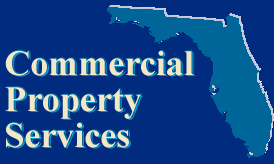|
Results
Count!
Corporate
taxpayers often express concerns about Tangible Personal Property
"compliance". In fact, businesses should comply
- by proper and timely "reporting" assets in annual
Returns.
Reporting
is first of two parts involving "compliance". The
second part of "compliance" BY THE PROPERTY APPRAISER
is appropriate application of "jurisdictional exceptions"
(USPAP) and "proper consideration" (F.S. 194.301)
of conditional facts (F.S. 193.011).
The
appeal process is intended to insure "government compliance".
Opportunities to challenge assessments mandate review and
recourse for taxpayers. Otherwise, there is no assurance of
"just value".
Real
property owners may worry about the impact an appeal might
have on price, if their property went on the market at a future
date. In fact, appeals are based upon retroactive conditions,
always months out-of-date by the time of a petition or a Hearing.
Actually,
real estate buyers typically ask "What are the taxes?"
The lower this amount, the more attractive. However, taxable
values normally reflect a "gross" market price.
Taxable value should be "net," after adjustments
are "considered properly". So, current market or
taxable amounts are likely to change after sales.
RIGHT
MAKES MIGHT - One multinational corporation's original
costs for Tangible Personal Property were $40 million US.
But, taxable values remained too high.
Facing
proven experience with the process in combination with conclusions
of a national expert, the property appraiser offered to settle,
in the hall, just moments before the Value Adjustment Board
Hearing.
Successful
appeals typically are the result of good evidence, well presented,
in the context of nuances inherent in each venue.
OUTNUMBERED,
BUT NOT OUT DONE - A folding table filled most of the
small room, leaving space for eight people to be seated. Yet,
after the Master and the clerk, it was deputies and their
lawyer 10 to agent 1. Surrounded! By government people. With
more outside the door, waiting their turn.
The
final outcome . . . property owners prevailed, with settlements
at the table. Reducing taxable values on 40% of Tangible Property,
adjustments made on $50 million US of rental apartment projects,
and 90% savings on wetlands.
Some
jurisdictions use the same master to hear every type of property.
Other venues schedule different cases before masters who have
demonstrated experience in specific types of property valuations.
Successful petitions often result from on-the-spot adaptations
of presentations, depending on the circumstances.
PASSING
THE TESTS - A national corporation assigned just three
"most difficult" Tangible Personal Property appeals
to their newly hired agent. Success was obtained in all three
venues, varying between settlements offered by respective
property appraisers and also before special masters.
The
next CPS assignment was 23 locations throughout the state,
with success even in venues known for denials. After that,
the number grew again.
It's
not uncommon for taxpayers to test agents, initially. Then,
if satisfied to increase assignments. Many often begin with
difficult cases. Yet, often the most impossible-seeming cases
may be won with good strategy.
TRANSLATING
TECHNICAL LANGUAGE - A textbook case of "functional
obsolescence" was not understood by the Property Appraiser's
Deputy. Worse, the Special Master confused "value in
use" with "fair market value". An impartial
explanation of the professional distinctions was furnished
to the VAB, which in turn submitted it to the Special Master.
Another Hearing ended up before the same Master, involving
the same functional problems, albeit uniquely used by the
same taxpayer. This time, "physical condition" was
noted, and Findings reflected the effect.
Like
appraisals, assessments are "opinions of value".
If assumptions change, inevitably conclusions change. Knowing
conditions of property is the first essential to giving appropriate
priority to data. Taxpayers should not assume all facts are
known or applied or are properly considered without full review.
THE
ETHICAL PROCESS IS A TWO-WAY STREET - The Value Adjustment
Board "Findings" arrived. There was a substantial
reduction in taxable value, for the second year in a row,
meaning many thousands of dollars saved by the taxpayer. Land
reduced by 50%. And, ZERO VALUE for improvements. It was obvious
the Recommendation could not be correct, since evidence and
arguments supported only the adjustment on land. The taxpayer
agreed to report the obvious error. Both VAB and Property
Appraiser were notified. The Special Master amended his Recommendations,
added back the value of improvements, and the resulting change
was considered fair by all parties.
Under-taxation
results in higher millage rates paid by all. Taxpayers ultimately
end up with less return on investment, on a compounding basis,
if improper windfalls are quietly accepted. Honesty must be
the policy if the process is to work in the most efficient
manner. Credibility pays back, when the benefit of doubt comes
up, inevitably, in other circumstances.
NEVER
SAYING NEVER - The president of a prominent lending institution
was told a problem of double taxation could not be resolved.
It was discovered after the Value Adjustment Board deadline
expired. It was later than the "just cause" filing
period. It was beyond the 60-day limit for court challenges.
Everyone else said the improper taxes must be paid. 100% of
the double taxation was removed.
Property
appraisers have broad discretion to correct "errors in
fact". In fact, there is an obligation to uphold the
law and maintain accurate tax rolls. Therefore, when a factual
error is noted, and can be properly documented, it is appropriate
for taxpayers and property appraisers alike to fix the problem.
COMING
OUT AHEAD IN AN OBSTACLE COURSE - County appraisers suddenly
assessed property of two airport authorities, within municipalities.
These authorities passed taxes through to more than one hundred
on-site concessionaires. Real property VAB appeals, on taxable
values, became complex as litigation ensued regarding exemptions.
Out
of about 100 affected businesses, one multinational tenant
opted to appeal valuations, in addition to being a party in
the legal case. Initial investigation revealed the taxpayer
was taxed for property they never occupied. Those obligations
were removed, and refunds were granted for prior years. For
those properties the company did occupy, petitions prevailed
for multiple parcels, adding up to 50% tax savings. The next
year, the outcome on value was repeated.
It
is critical to look at property. On site conditions will reveal
details about value. Sometimes even more telling will be the
circumstances in the surrounding area. In this case, "a
ride around the block" in a car revealed certain addresses
could not be found. From that discovery, documents could be
gathered to provide evidence of errors.
DIGGING
OUT BURIED DETAILS - One land developer saved thousands
of percent in taxes. It took careful review of essential data
related to thousands of parcels in a PUD. Many sections of
the vast acreage were unplatted and unregistered with the
state.
Still
others were divided into lots and small subdivisions. There
were scattered sales. Problems related to physical and environmental
conditions were evident in a number of parcels.
There
are 67 counties in Florida. Within those 67 counties, there
are 66 elected and one appointed property appraiser. Under
constitutional, statutory, case law mandates, uniformity of
process is the principle and ideal standard.
Yet,
no two counties operate their Value Adjustment Boards identically,
any more than any two properties perform in identical fashion.
To insure accurate taxation, each property owner should know
how appraisal works, what are the "jurisdictional exceptions"
to USPAP (Uniform Standards of Professional Appraisal Practice),
and then be aware of the variations in process which apply
in each jurisdiction, including attitudes of pattern of appellate
courts.
In
addition, Florida does not have a definition of "market"
although having such has been recommended by the Auditor General.
And, there is more than one way to define "market"
- in physical as well as economic terms.
It
becomes very critical in some circumstances to define perimeter
boundaries of a location or trade area, then look at legal
environment as well as physical conditions. From those perspectives,
select comparable sales or operating data applicable to real
and tangible property.
|

